Electromagnetic Pulse (EMP) – What You Need to Know about Attacks and Solar Flares
This post may contain affiliate links. Read my full disclosure here.
The two most likely reasons for an EMP are a nuclear explosion or solar flare. This post discusses the damage an EMP may cause and actions that you can take to prevent or manage the results of the EMP. A large Electromagnetic Pulse EMP would cause widespread problems.

Table of Contents
What is an EMP (Electro Magnetic Pulse)?
An EMP or Electro Magnetic Pulse is a wave of electromagnetic radiation. It is like sunshine or a bright flash but on a different frequency.
The electrons from an EMP rains down on the plant. Those electrons interact with power lines, metal, conductive materials and electronics and causes power spikes. A large EMP could knock out power or damage or destroy electronic equipment.
Most EMPs do not directly hurt people, although they may cause harm when produced in extreme conditions such as munitions explosions.
What causes an EMP?
An EMP can be caused by many things. The two most likely EMP threats are a nuclear explosion or solar flare.
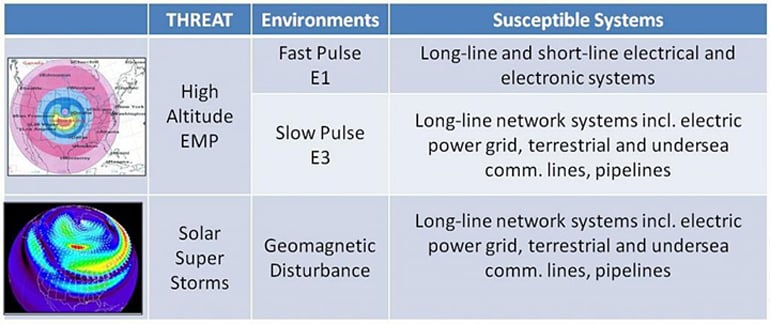
What could an EMP damage?
Depending on the power of the explosion or solar flare, an EMP could disable, damage or destroy:
- TVs, radios and other broadcast equipment
- Power grid transformers and substations
- Telephones (land lines) and smartphones
- Vehicle and aircraft control systems
- Computers and all internet connected devices
- Refrigerators
- Generators
- Satellites potentially within the range of the EMP
Anything electronic or powered by electricity could be damaged by an EMP. The damage will vary with the size of the EMP and how close you are to the center of the energy from the EMP.
What is the difference between Solar and Nuclear EMP?
A nuclear EMP is a more energetic and has a shorter burst. A solar flare EMP may also be referred to as a Coronal Mass Ejection (CME) or a geomagnetic storm.
Solar flares vary widely in intensity from simply causing bright “northern lights” to potentially destroying some or all of the power grid. Smaller EMPs may cause power grid blackouts. Solar flares can last much longer than nuclear EMPs.
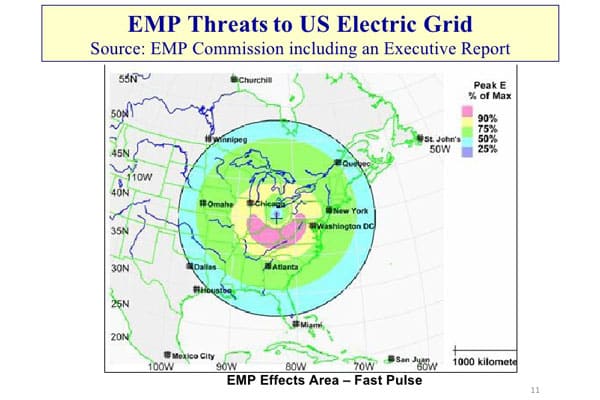
Nuclear/High Altitude EMP
With the proliferation of nuclear weapons, the likelihood of a nuclear EMP increases. A nuclear EMP requires a nuclear weapon delivered by a rocket, high flying aircraft or ICBM. The nuke is detonated high in the air (referred to as an “air burst” or atmospheric burst) to create the EMP.
In a worst case scenario, the nuke is detonated in the upper atmosphere, approximately 20 miles up. A large 1 kiloton to 2 kiloton nuclear electromagnetic pulse like this would be very serious. A nation state or rogue state such as North Korea or Iran are the most likely cause of an atmospheric nuclear burst (EMP). There are other ways to create small directed EMPs but we are not covering them in this post.
How bad would the damage be?
The atmospheric nuclear explosion itself would create little to no physical destruction. The gamma radiation would be fairly far away so its direct impact would be limited. However, the air burst nuke would create a widespread EMP and some limited fallout.
That large nuclear EMP would destroy or at least damage the electrical grid (see below). It would also destroy electronics within the EMP area.
Nearly all vehicles with electronic systems would fail when exposed to the EMP. The level of damage depends on how close and how powerful the blast is. Of course the location and protection of the vehicle impact the level of possible electronics damage.
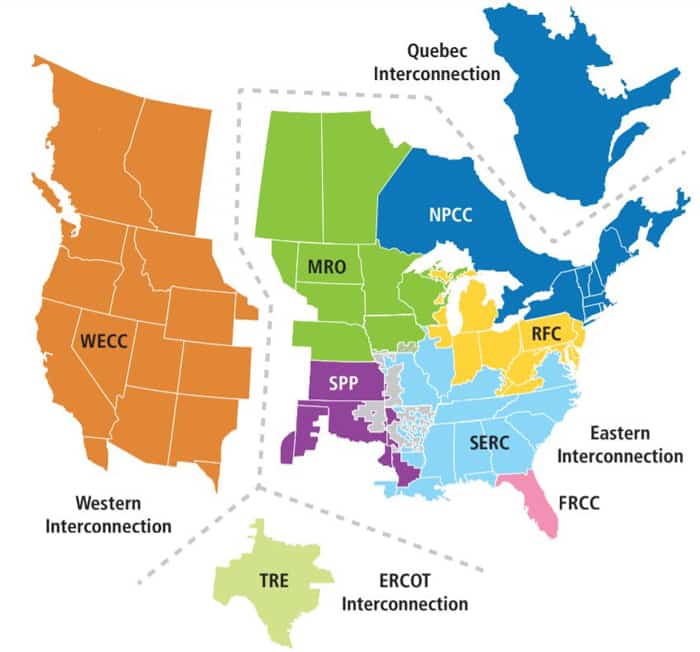
Basically, a fast burst, high energy nuclear EMP damages or destroys all nearby non-shielded electronic devices (cell phones, refrigerators, generators, inverters, TVs, radios, cars, etc.) within its area of effect in a few seconds.
Note: In nuclear weapon tests, the EMP doesn’t expand in simple circles. The earth’s magnetosphere deflects and interacts with the blast, causing the waves to spread more strongly away from the poles and may vary widely.
The pulse is concentrated more strongly in a semi-circular band, as shown in the image above. The earths magnetic field deforms the explosion. The image below gives a rough idea of the interaction between the EMP and the magnetosphere.

The graphic above is only an estimate – and would vary in the real world based on size of the weapon, altitude it was set to explode at, the atmospheric state, magnetosphere state and other variables.
Recent News
News Release: DHS Releases Recommendations to Protect National Public Warning System from EMPs
US working with 77 radio stations on EMP protection
How long would it take to recover from Nuclear EMP?
The time to recover from an nuclear EMP could be hours, days, weeks, months or years. Recovery would vary depending on the scope, location, size and type of explosion, and altitude of the EMP attack.
The scope of damage to critical infrastructure nationally would be a big factor in recovery time. If the blast was small enough or far enough away, vehicles may be disabled temporarily but might be able to be restarted. There is no clear, easy way to predict impact, duration and scope of an EMP.
The biggest risk is a multi warhead nuclear EMP attack resulting in multiple atmospheric nuclear bursts. Multiple bursts spread out over the USA would likely cripple if not destroy the entire power grid. A total power grid failure would require months to even years of recovery work. If the power grid fails, water and natural gas also fail soon after the burst.
Could a surface nuclear blast cause an EMP?
A terrorist group would have trouble successfully setting off a high altitude air burst. It is more likely they would likely use a ship and float in a nuke to a major port city.
The lower altitude greatly restricts the range of the EMP damage. Unfortunately the proximity to the ground would increase local physical damage, gamma radiation and fallout.
A dirty bomb would tend to be devastating locally, but would not result in a widespread EMP. See also “Nuclear Radiation Exposure – How to Reduce Your Risks“.
Nuclear EMP Details
The amount of energy created in a nuclear EMP is difficult to calculate. We can estimate the energy based on historical nuclear tests.
A nuclear test using a 1.47 megaton bomb was detonated in 1962, about 400 kilometers (250 mi) in the mid-pacific ocean. The test was called “Starfish Prime” . The nuclear detonation caused electrical damage in Hawaii between 800 to 900 miles away.
If the same 1.4 megaton nuke was detonated off the US, it is estimated it would have created a 22 to 30 kV/m pulse at the core of its blast. A modern hydrogen bomb is 3 kilotons all the way up to 1.2 megatons, so the amount of energy from one of these would vary greatly. You can use the kiloton ratio to estimate the range of the EMP and impact in kV/m.
Aircraft may be impacted, but the metal fuselage would function partially as a Faraday cage. That means aircraft would not necessarily as susceptible, depending on proximity and many other variables.
The distance from the detonation, the altitude and the magnetosphere will determine the amount of damage to electronics. Ultimately the area in the blast would very likely see a regional electrical grid failure. A functional vehicle would not necessarily do you any good if the gas stations can’t pump.
EMP Proof Car
Cars are more resilient than many other electronics. The car has a partial “faraday cage” because of the metal frame, which helps some, and the rubber tires isolate the vehicle from the ground. This protects the electronics to some extent.
If you are in a storm, if you had a power line hit your car STAY IN THE CAR. The tires isolate the power flow. Do not get out.
Getting out causes your body to create a ground route (a circuit) from the power line to the earth through YOU. This same protection helps you if there is a smaller EMP so all cars and trucks might not fail like in the movies.
The older the car or truck the less sensitive it would be to an EMP. A grounding unit (fuse) on the car battery would help, but will not eliminate the risk.
The problem is that a car still has a 12v positive and negative in the battery, an antenna for the radio and wiring. The electronics in a car or truck would likely survive .25 kV/m EMP blast (especially if it’s not running), but higher than .25kV/m would likely damage or destroy the electronics. The higher the kV/m (higher power EMP) means a higher likelihood of damage.
What is a Solar Flare?
A solar flare or Coronal Mass Ejection (CME) is created by the sun through normal activity results in a burst of electromagnetic radiation that travels through space. This type of EMP is normally less damaging to electronics but more damaging to the power grid.
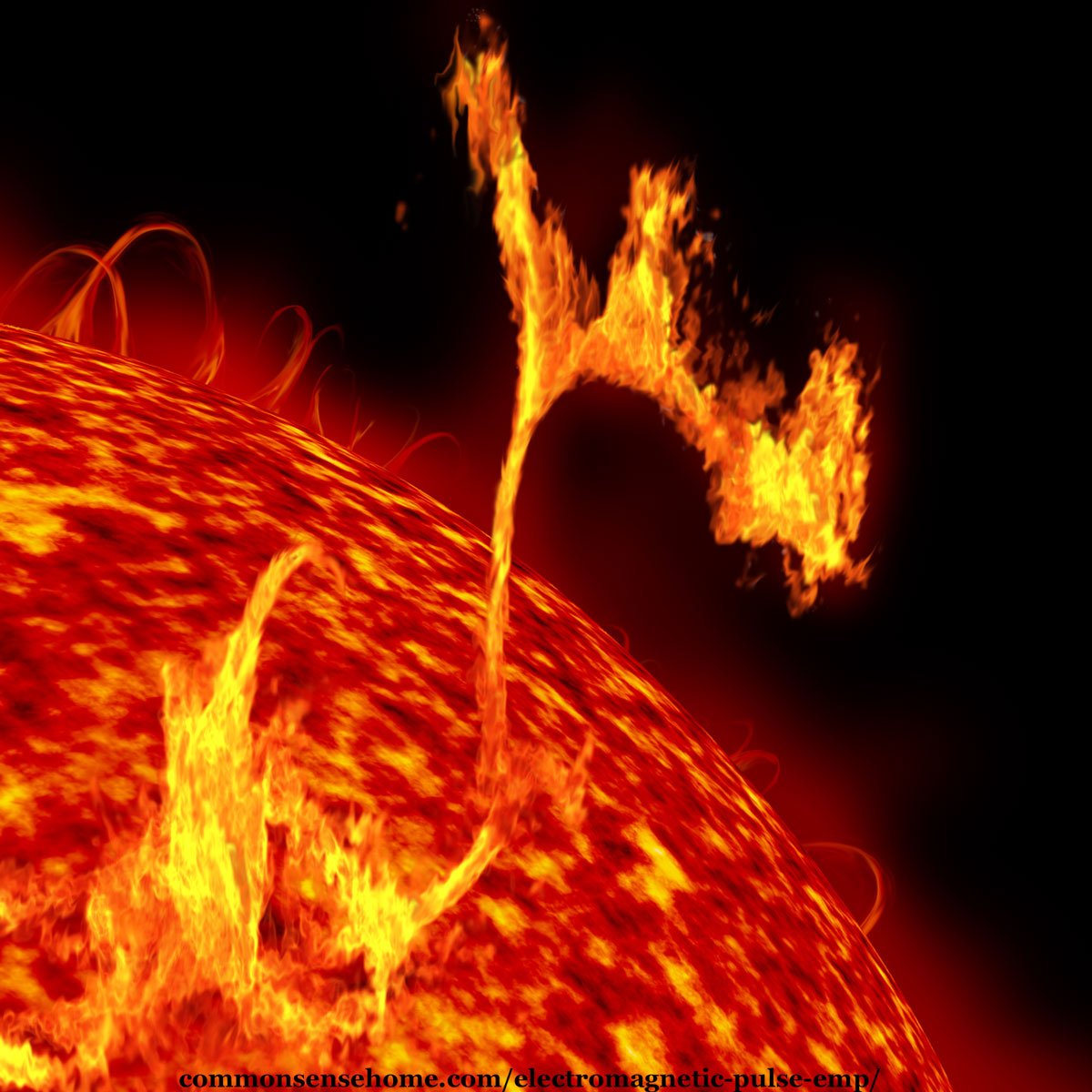
Scientists can detect a coronal mass ejection (CME) and have time to issue a warning. It takes about 5 days for a CME to reach earth.
When a CME hits the earth it creates a geomagnetic storm or EMP on earth, also referred to as a Geo Magnetic Disturbance (GMD). Our magnetosphere protects us from most solar radiation and EMP effects. Although rare, larger solar flares get through the magnetosphere and impact the earths surface. The flares that hit the surface are the biggest theat.
Why is a solar flare dangerous?
A very large, extended Solar Flare EMP could destroy some or all of the high voltage backbone transformers, locally or globally. These transformers are critical to the U.S. electric grid. Even if only a few hundred of the larger transformers were destroyed it would likely disable the entire interconnected system for weeks, months or even years.
Small electronics could survive a solar flare, cell towers could, some cellphones may survive also. The bigger problem is the power grid damage. An extended Solar EMP is a big problem. In general a large long lived solar flare would be far worse than a single nuclear EMP, damaging or destroying satellites and the power grid.
Would you like to save this?
You can get warnings and alerts for known solar flares on your computer or smartphone. Here are some references:
- Apple Solar Alerts Apps
- Google App Solar Alerts
- NWS Space Weather Alerts, Watches and Warnings
- Flare Aware
How long would it take to recover from Solar EMP?
The recovery time for small solar EMP could be days to weeks (like 1989 in Canada). The time to recover from a large solar flare EMP could be months to years. The effects of an EMP vary widely depending on the scope, weather, grounding, location, intensity and length of the burst.
The largest risk is damage to the electrical grid and technology infrastructure. A major EMP would not directly kill people but the resulting loss of power and communications would result in short and possibly severe long term impacts. It could also disable or destroy some satellites if the flare was strong enough. Although unlikely, a solar flare could also cause cars and trucks to stop working temporarily or permanently.
Largest Recorded Solar Flare in History
The largest recorded CME was the 1859 Carrington event. It lasted multiple days and impacted the entire planet.
It caused telegraph wires in the United States to burst into flames, starting fires along the telegraph lines. Telegraph machines scorched paper printouts, gave operators electric shocks, and transmitted gibberish. Telegraphs continued working for hours even after being unplugged from the batteries that powered them.
For two days, the light show (northern lights) and electromagnetic storm continued, then faded. A repeat of this event would be disastrous to our electronics dependent modern environment, impacting part or all of the planet. The scope of a larger flare would be devastating.
NOTE: Scientists suspect that in 774AD there was a major flare referred to as the Miyake Event. The estimates are that it was 10x to 14x larger than the Carrington Event. As this cannot be 100% confirmed I list the Carrington as the largest recorded. The measure was based on carbon-14 tracking in trees.
7176 B.C. Solar Storm
There is evidence of a massive flare in 7176BC. Based on isotopes and radioactivity, scientists determined the 7176 B.C. storm was far worse than any recorded solar storm to date.
If that flare happened now it would completely disable satellites and the power grid. More info at “Ice holds evidence of ancient, massive solar storm“.
Recent EMPs
In 1979 there was a small solar flare that caused Toronto to be without power for an entire day. There was also a smaller flare that knocked out power in the entire province of Quebec in 1989. The odds of these events are hard to predict, but the likelihood is as high as 1 in 8 for the next 10 years (varying with the solar cycle).

Protect Devices from an EMP
You can shield or protect devices by protecting them from the pulse or radiation. These are primarily for a nuclear EMP. Here are three ways:
- Build a Faraday cage (a shield that redirects power to ground) using a conductive metal container that is grounded.
- Ground a “shell” around them and isolating them from the electromagnetic radiation/power spikes
- Use industrial grade ground fault isolation will help from a grid feed issue but fuses and ground fault will not stop the electron flow from an EMP
5 basic EMP protection options (primarily for a nuclear EMP)
Foil Wrap
A simple Faraday cage can be made by COMPLETELY covering an object with aluminum foil. Wrap your radio with cloth or other insulation, then wrap that with a double layer of aluminum foil (to ensure no gaps). Ensure that this shell is well grounded (electrical ground).
Garbage Can or other metal container
A large fairly cheap Faraday cage can be a steel garbage can with a couple of grounding rods. The steel of the garbage can interacts with the EMP and creates a voltage/current spike that is then grounded. That redirects the electrical charge, protecting the contents of the garbage can. A Faraday Cage can be used to store radios and other susceptible electronic devices.
Metal Roof
A house with a extremely well grounded metal roof could protect from an EMP, because it could effectively “shield” the house by interacting with EMP and then re-directing the resulting voltage/current spike to the heavy ground wires (like lightning).
A multi-day solar flare would create ongoing voltage/current. A nuclear explosion would create a spike more like a lightning strike, independently hitting everything within line of sight. Note: A grounded metal roof alone doesn’t fix the problem, because power line spikes could negate any benefits a metal roof would provide.
Metal fencing to create a “box” or full “cage”
Combine the cage with multiple grounding rods. Include a metal fence roof and ground all the panels or sections. The cage “catches” or absorbs the EMP (electron flow) and redirects the electrons to the earth. This type of setup allows for more storage.
If you want a simpler solution to protect a select few emergency items, there are off-the-shelf protective enclosures such as these bags.
EMP Questions and Answers
Would a power strip protect my device from an EMP?
Power strips and circuit breakers would protect your device from a power spike from the power grid, and help with a small EMP. They would not protect from the extended radiation exposure of a large EMP.
Does an EMP permanently destroy electronics?
Only if it is large enough and close enough, and the device is not protected.
What is an EMP Gun?
A device that creates a short electromagnetic pulse or beam.
Is a solar flare or nuclear EMP more dangerous?
An EMP from a nuclear bomb is more likely than a super massive solar CME. If the CME were large enough and long enough it could take out all power grid sources in the world. A nuclear EMP would damage electronics in an area but not the entire planet.
How to prepare for an EMP?
The best course of action for most people is to focus on events such as a 72 hour power outage. Short duration trouble is more likely than long term problems.
It is possible but quite unlikely that a global event could occur due to: a solar flare, major meteor storm, pandemic, major volcanic activity, war or any number of other catastrophes. We suggest you plan for the far more likely small solar flare, snowstorm, power outage, tornado, earthquake or hurricane.
Prepare for likely short events first. Then if you have the resources and understanding, prepare for the less likely ones like a solar or nuclear EMP or a very large CME.
Preparing for a small EMP
Prepare like you would for a hurricane, tornado, earthquake or other extended natural disaster. The government recommends 72 hours of supplies. We recommend 7 days to start, 30 days as a target and your stretch goal of 1 year.
Stockpile food and water, fuel, prescriptions, general medical supplies, personal hygiene items – the basics you need to survive. Use those stocks first in first out (meaning use the oldest first).
Plan for cooking, shelter, self defense, heating, cooling, clothing, hygiene, handling medical emergencies and garbage disposal as if you were camping without power. Having 72 hours to 1 year of food and supplies stashed can serve you regardless of the event, even as simple as a job loss.
Preparing for a large EMP
This is harder and far less likely. The time to recover from a large solar or nuclear attack would depend on location and many other variables. It could be weeks, to many months or in a worst case scenario, years. There would also be chaos as supplies dwindle, and the military would likely be called in to maintain order but would be stretched beyond its capacity.
We’ve all seen how quickly grocery stores empty during emergencies. We are still dealing with supply chain issues from COVID. A large electromagnetic pulse would be worse. Effectively, you would need to be prepared to live without power, i.e. living off-grid, for a few months to a year or more.
If you are preparing for a single nuclear EMP, the recovery time would be quicker. For a large solar flare or multiple nuclear bursts, the recovery time would be much longer. With a global, multi-day major solar flare CME, it would be many months or even years before we would recover.
Two Options – Primitive Living or Self Sufficient Power Production
Basically, you would need to prepare to live an 1800s lifestyle – wood stove, hand-tools and no electrical power. You would need tools and equipment necessary to garden, hunt, prepare food without electricity or gasoline. You would need a good stock of books, tools, medicine, and learn a LOT of skills.
The other option is to store a completely protected and isolated power generation system, solar, bio diesel equipment, gasification, wind etc. and know how to put it together after the event.
If you are planning on keeping modern conveniences you will need to a full electrical power generation system protected from the EMP and spare parts. A Faraday cage around solar panels, bio diesel equipment and/or a wind generator are your best bet, since you won’t be able to get gasoline or natural gas. Box up everything electrical in Faraday Cages.
Related Posts
- When the Power Goes Out – 12 Things to Prepare
- Emergency Power Options for Your Home – Gas Generators and More
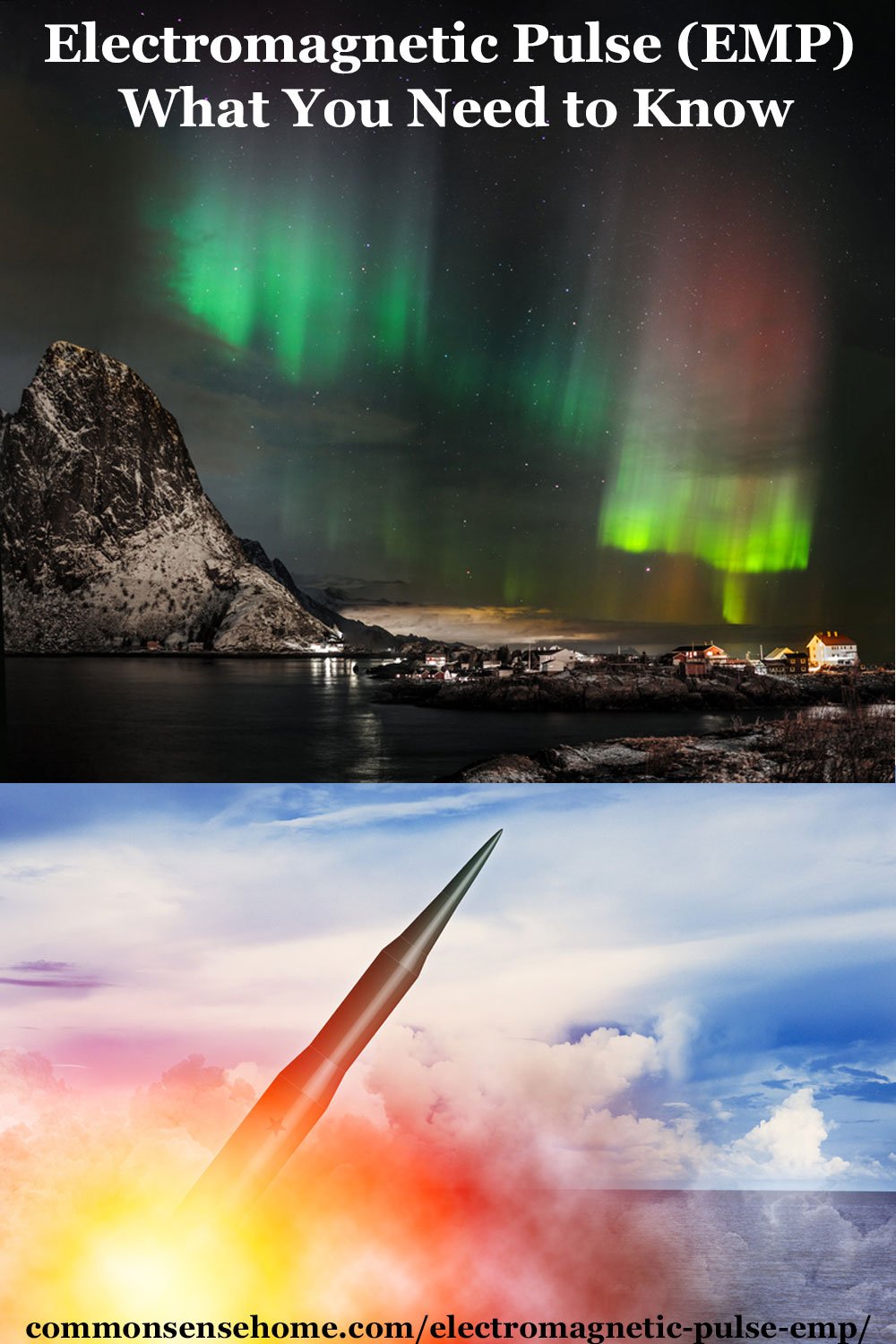
References
- Report of the Commission to Assess the Threat to the United States from Electromagnetic Pulse Attack
- The State of Preparedness against the Threat of an Electromagnetic Pulse (EMP) Event
- Starfish Prime
Related Articles

This post was written by August Neverman IV. August has a strong background in emergency preparedness. He served on several emergency preparedness teams during his tenure at Brown County WI Government, the Medical College of Wisconsin, HSHS, a 13-hospital system and emergency response training during his time with the Air Force and Air National Guard. Learn more about August.
Originally published 2013, last updated November 2023.


I love to buy one of them how much do it cost the EMP
Could you rephrase the question? I don’t understand what you are looking for.
China’s #1 foreign investment is U.S. treasury bonds. If the U.S. economy goes down; so will China’s Economy. They may hate us; but they love our currency’s worldwide acceptance.
You can go to any country in the world to buy something( illegal or legal). If you have U.S. dollars; people will sell you whatever you want. China and Russia’s rich people are heavily invested in Amer. companies and Amer.dollars. So Why would they let a crazy nation( N.Korea) do something to endanger their investments?
The most E.M.P. proof cars were built from 1976 to 1979. How often do you see a car that old being driven today? Only a few sports car are highly sought after. Few young people would want to drive a car their Grandparents once bought brand new. Few would want to buy one then restore it.
People do still drive older cars, but it’s definitely a niche thing for collectors. A lot of city people don’t even have a vehicle of any sort, choosing instead to use public transport or one of the many ride services.
Strong economic ties make full out war bad for business, it’s true. The more likely scenario is not a nation state endorsed action, but a localized attack with a dirty bomb, possibly in a port due to easy access, from an extremist with an axe to grind.
A one megaton device detonated 300 miles over Kansas and most of the US is done, the resulting break down of society would finish the job, mass starvation. A solar flare the size of the one in 1859 would fry every electronic device in range, the one in 1859 even set telegraph offices on fire.
Anything having a circuit board will be at risk, nukes, planes, ships, cars, you name it, even your toaster and coffee pot. Time to prepare, folks.
The odds on an E.M.P. strike happening are possibly 12,000,000 — 1.
An E.M.P. strike is an DEFENSIVE weapon. Let’s say you want to capture a city. An E.M.P. blast will fry the city’s power grid. Plus it’s computer networks. All that stuff will have to be repaired before you can occupy the city. How will you know which parts you’ll need to repair everything? Where’ll you get people who can repair everything quickly? If you infiltrate the city with soldiers; you can capture the city with everything still running.
When the U.S. bombed Baghdad; we totally wasted the whole power grid. We captured the city. A city where it could easily reach 120 degrees in the shade for weeks. We were not able to restore power for the whole city for months. How would you like to live in a city where it got that hot? Plus you only had electric power for one hour per day.
Of course, that assumes that whoever’s launching an EMP wants to take control of an area that’s functional. If you wanted to empty an area and/or starve out a population, and didn’t care about collateral damage (or wanted to do large amounts of damage), that would change the odds of a strike.
There are people on this planet who espouse that their goal is to “kill all the infidels”. It could be simple rhetoric, but if taken at their word, living in an EMP decimated area is not their intention.
Given that the folks who are supposed to find “bad guys” can’t seem to find their backsides with both hands, I don’t feel confident in their abilities to detect a small cell of individuals sticking a dirt bomb in a container off either coast. It’s low tech, affordable, and would make a lot of people quite miserable. Nation states are not my primary concern at this time.
An EMP is a first strike weapon. If Russia or China or even North Korea attack, that will be the first to go off and paralyze the US.
What is your opinion of the efficacy of EMPshield.com products? It sounds like an easy solution but I am skeptical.
Short answer. It will work somewhat.
Long answer – The EMPShield is effectively a surge suppressor (and ground) depending on installation. Surge suppressors will mitigate lightning and similar events. The grounding will reduce the risk of damage by allowing the flow from a lightning strike, solar flare or EMP to “ground out”. The trick is, if the EMP damages all the electronic devices directly, the surge suppressor/ground won’t matter.
Think of it as protecting the WIRING. But it cannot protect sensitive electronics that would be fried from a Large (nearby) EMP regardless if they were “plugged in” or not. In other words it cant protect the device if the EMP affects it DIRECTLY, but it can protect the device from the spike that occurs across the grid.
It is not 100% a scam but it is misleading. It would ONLY protect from situations such as “lightning strikes” which an EMP could be. So limited protection – better to get a good ground on your panel and some fully isolated devices. If you have money to burn – go for it. At minimum it will not hurt.
My question regards off grid solar systems. You note the panels can become a conductor/amplifier, you also note the inverter itself (containing a ton of electronics) is an issue.
What about the storage batteries?
Thanks in advance for your thoughts.
Whether it is solar flare or EMP – the panels themselves are going to be OK. The problem is both a large solar flare or significant EMP can damage the wiring, inverter and other control electronics. Basically overvoltage AND computer chips frying are your two risks. Modern Inverters have fancy electronics and those can get cooked. Re batteries, that is a bit more grey. Assuming they are not solid state batteries (liquid or simple NiMH etc) you should be ok, UNLESS they get overcharged by induced voltage on the line. There are a lot of unknowns. But in summary: Solar panels OK, electronic controls susceptible to EMP/Flare (spike or overvoltatge), wiring overvoltage, and batteries – possible overvoltage. There has NOT been a lot of testing on this so I am extrapolating from some OLD military tests (ie educated guess).
Probably a dumb question but just out of curiosity, what happens to the electrical charge in an ungrounded Faraday cage, like (say) a trash can? Without a ground, would the trash can act as a capacitor, and just store the charge until somebody touches it and possibly kills themselves?
Odds are that being electrocuted by a trash can is probably the least of your worries after an EMP. They simply don’t make very good capacitors, and it’s unlikely to be entirely ungrounded, as it’s still sitting on some sort of surface.
If a vaccine contains graphene oxide, which is conductive, what effects if any would an EM Pulse have on the human body?
While there may be some potential for disruption if somehow said graphene oxide were organized into some sort of functioning circuit, I have not seen evidence that this is taking place at this time. (Injecting circuits.) Some individuals have demonstrated magnetic properties at the injection site, but I have not seen explanations of this phenomenon.
If we got hit with a wide scale EMP, there would be much bigger issues.
Thank you,
Very thorough article, interesting information.
Thanks for catching the mix up.
This does not make sense:
“A car is well grounded because of tires”
Tires are made of rubber and other polymers which do not conduct electricity.
Then, this says the opposite:
“So the tires isolate the vehicle”
The part of an automobile being a “partial” Faraday cage seems confusing (to me that is).
That would be confusing because it was written incorrectly. I think I have it straightened out.
Would a steel panel 100% metal building building, grounded, be sufficient protection against EMP, be it nuclear weapon or CME? Thank you for this information.
Somewhat. The EMP is so fast that you are trying to BLOCK/SHIELD the blast. A longer CME would have time to ground (more of a ongoing spray than a blast) and the metal building would have a higher chance of redirecting the resulting charge. Oversimplification: Think of the EMP as a tank round fired hitting all at once, and CME as a wave or river of flowing. Shielding for EMP vs Grounding and shielding for longer CME.
My guess is CME would be easier to shield/protect from. BUT, there has not been a lot of testing on this, so I am stating theoretical response. My response is NOT results of lab or real world tests (other than starfishprime and the russian above ground tests). It is best guess until it happens.
Hi maybe a dumb question…
Will programmable shunts that are in the brain, that are reprogrammed by magnets and also “unprogrammed” by magnets be affected by and EMP?
My 6yo has one and this terrifies me.
It’s possible it may be affected by a weaponized EMP, but not likely to be impacted by a CME (coronal mass ejection) type EMP. Your healthcare provider or the manufacturer of the shunt may be able to offer more information.
I have a large metal gun safe with an electric only lock. The lock is supposedly “EMP-Resistant” to MIL-STD 461F. It says it functions at 50 KV/m. There obviously is a battery in the lock and no other external connections. My concern is that something like a very large solar flare occurs and renders it impossible to unlock the safe. I dont know much about how valid these EMP tests are nor how big that would actually be. Do you think something like that would render the safe unusable? Do you have recommendations on protecting it? Would it help to remove the battery?
1st I dont recommend any critical systems use electronics if you are concerned with either solar or nuclear EMP. As an example get a hand grinder not an electric one.
The spec is designed for a High Altitude EMP (airburst to take out electronics in an area). If it was a solar flare i would guess all bets are off because it would last longer instead of just a big short pulse.
I dont know enough about the electronics and mechanicals of the safe to even provide a guess as to your risk level.
I have no idea if removing the battery is a good idea or not either. Maybe contact the manufacturer
That said the MIL-STD 461F rating is much better than no protection or home made protection.
Best of luck
Just a heads up the grounding conductor is not your fault path to earth.
The grounded conductor is witch in basic terms its the neutral conductor that is the fault path to tera/earth.
Grounding electrodes ( ground rods) are basically lightning protection.
I my opinion to get a truly secure EMP fault path to earth would be a combination of lighting rod deployment with adequately sized fault path conductors to earth.
now While I was deployed to Iraq I had the opportunity to see and engage in electrical anomaly’s I had never seen or even heard about prior.
One of our biggest issues was the energization of our housing units by electromagnetic fields produced from radar antennas. In some case there was a single radar sight energizing the CHU’s (Containerized Housing Units.) in excess of 290 to 500 volts AC , with grounding electrodes not helping the slightest, depending on the region. In the AL Ambar Province there was very high content of silica (GLASS) in the earth and if you poured water on the ground rod your resistance would actually get higher.
Getting back on point .
Lighting protection tied to a ground grid or better known as grounding DELTA. completely isolated and insolated from metal structure, Faraday cage. This Would be the safest Cage.
there will be minimal residual noise. I just answered my own question.
I will use my metal 5000 square foot warehouse building as my faraday cage and I will protect it as I noted.
Does any body have a better solution ?
Correct and thank you for your service. A “ground rod” helps and will be better than nothing but it needs to be confirmed to be able to ground out for real voltages and wattages.
I assumed an extended solar flare would be easier because it would be much longer lasting but lower max voltage. I assumed a nuclear EMP would burst 20,000 to 200,000 volts so a big spike, low wattage but still a really BIG short spike. A cellphone would not deal well with that if that huge voltage flows through it even at a low wattage. So it would be more like a lightning strike. The assumptions could both be wrong also.
What you described would be more like a very large solar flare (there for an extended time). Either way you need a “good ground” – one that would continue to ground out regardless of the voltage/wattage. Exactly as you noted.
in what reality does some rogue state explode a nuke over the US and that event doesn’t erupt a major war – if not a global nuke war >> and any EMP producing nuke from a major power like Russia or China would be only a prelude to a full scale exchange …
if you prefer to go down the One Second After scenario – no terrorist group is wasting a single nuke on some possible EMP death toll >> they’d be going for a guaranteed body count before the US hunts them down in vengeance ….
The Illini Warrior lives in alternative reality. The one where ignorance is bliss.
There are more deceptive scenarios such as the “False Flag” event which is used to covertly target an enemy under the false identity of the intended target who would then be accused and attacked in retaliation.
If there’s no power, to the device, it’s protected, yes?
It depends.
Something larger, like a vehicle, where the electronics are protected inside a metal shell, might be okay.
For more delicate, unprotected electronics, they might be toast. An EMP is an electro-magnetic pulse. If it is strong enough, it will damage circuits (too much electricity), whether they are on or not.
Also, some devices still carry current even when they are “off”. Think about digital displays and electronics waiting for signals from a remote, or digital assistant devices listening at all times for the next inquiry.
what about a new in the box refrigerator or freezer? Nothing fancy with digital controls, just electronic temperature controls.
It may work, but if the power grid is fried, there’s nowhere to get power for it.
I was just wondering about medical implants. My step-father has a pace-maker, & it pumps his heart for him. Would an EMP destroy that? Is there any way to protect it?
From the discussion “EMPs and pacemakers“:
I also found a military report titled, “The Effects of Electromagnetic Pulse (EMP) on Cardiac Pacemakers”, which indicated that pacemakers were likely to survive.
“An EMP does not directly hurt people,…” EMPs are a lot more common than most people are aware of, as they have been around much longer than those produced by nuclear explosions. The following is a quote from a Los Alamos National Laboratory report, “The emission of electromagnetic radiation from a chemical explosion is well established.” This is definitely not taught in the universities. I have a BSEE and did not learn about the chemical explosion EMP from a university source.
The first report of an EMP from a chemical explosion was reported by a Russian seismologist in 1939. In 1955, a Japanese and French researcher each independently discovered that a chemical explosion produces an EMP. Most of the current research about this phenomenon is classified, because it deals with detecting the difference between an underground nuclear detonation and a large underground chemical explosion. My interest in the issue began after the John Hopkins pathologist report.
I would not state the an EMP doesn’t hurt people. https://vixra.org/abs/1502.0196
I’ve updated the post to reflect this information.
Thank you. Very interesting.
If you have a solar system, is it enough to keep a spare transformer in a faraday cage or are all pieces susceptible?
Yes and no. The size and type of EMP can cause variables that are hard to predict. The solar panels might aggregate the power of the EMP depending on the wavelengths and energy involved. Using heavy duty ground fault isolation may reduce the risk. A large solar EMP might be easier to isolate, whereas the fast burst of an nuclear or gamma burst would be harder to mitigate. A spare transformer (inverter) would be a good plan regardless.
Thanks for the work you’ve done on this, very informative.
You’re welcome, Jackie.
Sir I am an Engineering student from Bangalore.My doubt is do neutron stars emit EMP s?
There is a theory that a neutron star emits a gamma bursts… and there luckily aren’t any near earth. http://www.astronomy.com/news/2018/09/neutron-star-with-incredible-magnetism There are theories that a gamma ray burst may have caused extinction level events on earth. https://www.bbc.com/news/science-environment-21082617 Those would be so bad that there is no emergency plan… just have a party, get a lawn chair and a have good drink.
Can EMP effects actually cause fires in facilities? And are certain types of a facilities more vulnerable to fire? Most of these articles seem to focus on disruptive communications and the overall blackout and I get that? But if you are facility manager and still have to respond by actually fighting fires — has anyone explored what facilities are more vulnerable than others and what is the source of the fire?
An EMP could cause fires by overload electronics. Some facilities are likely to be more vulnerable to fire, they would have flammable material. A fire would likely occur due to electrical fires. The type of event is the biggest issue. A nuclear event has a lot of other issues. A solar flare most likely leaves a building without power. So I would suspect a fire would be particularly bad because there would be no power. And overall you are correct; EMPs would be more focused on loss of power and damage to electronics.
In the Carrington event there were most definitely fires caused by overloads. Most of the fires were in telegraph offices near paper. For some future possible event, flammables near electronics and/or power equipment would be a risk.
? Most of these articles seem to focus on disruptive communications and the overall blackout and I get that? But if you are facility manager and still have to respond by actually fighting fires — has anyone explored what facilities are more vulnerable than others and what is the source of the fire?
Any precautions for those with implanted electronic medical devices like pace makers or insulin pumps?
Contact your medical provider. There are so many variables I cannot provide any suggestions. Some pacemakers are effectively immune some aren’t. IV pumps can be protected like any other device (put it in a Faraday cage). All the best.
OK< this may be a totally stupid question, but I really don't understand electronics: (sorry to those of you who do!)
If I want to protect a computer and software, like DVD's, CD's etc., (not necessarily for use on the internet, which I DO understand won't be usable, but rather for keeping important documents and photos I have scanned, articles for reading re: disasters, etc.), does the software (CD's, DVD's, need to be wrapped and stored in a faraday cage as well? Will the foil harm them?
I'm just trying to get all my important items stored away, as there is no way to predict such an event and I need to get them protected now.
Also, how can I 'ground' a small metal trash can stored in my home? Or any other item that I need to ground?
Thank you.
Also trying to figure out how to protect a rather large generator just in case…..
In a nutshell any storage that uses metal can be impacted by an EMP. Pretty much all electronics would be impacted by an EMP. To protect your information the best option is to get it printed. A local print shop would be an option and a number of websites will print a book. You would need to dump the content into a PDF and lay it out how you want. A printed book will protect your material. If you are dealing with changing information just use USB memory and a grounded Faraday bag. Copy the info to the USB Memory stick and drop it in the bag. If you are trying to keep your computer operational that is a bigger challenge. An alternate might be a small tablet such as a Kindle fire that you could charge using solar panels, and periodically put the data onto it as PDFs. I hope this helps.
Thank you.
You’re welcome.
Sorry, stopped reading when I read “A modern hydrogen bomb is 50 megatons”
More like 300 kilotons.
Please do your research my friend as this is wildly inaccurate. Means I ignored everything else you wrote.
Absolutely correct. The modern 2017 arsenals are now in the single kiloton to 300 kiloton range. More tactical than strategic. The nuclear warheads that are in the 1 megaton+ range are generally multiple warheads in a single delivery system (ie MIRV). The Russian Tsar Bomba was the approximately 57 to 58 megaton bomb that was detonated in 1961 was the one I was originally referring to, and have corrected it and noted it here. That particular nuclear explosion caused 3rd degree burns 62 miles away so it was VERY large. But again the size of the explosion isn’t entirely the factor for the EMP, it is the location, whether it is a “fast” or “slow explosion”, altitude, and lat/long relative to the current state of the magnetosphere — so a LOT is estimates and guesses). Thanks for the feedback, I needed to clarify.
The article states that modern nuclear weapons are 50 megatons, but this isn’t correct. The largest nuke ever detonated, the Tsar Bomb, was 50MT, but most modern nukes are between 0.7 and 5 MT. I’m not an expert, but my understanding is that this size fits into ICBMs and allows separate Multiple Independent Reentry Vehicles (MIRVs) to target specific locations better. Having multiple bombs also makes it harder to shoot them down.
It’s also incorrect to assume that a bigger bomb automatically equals a bigger EMP. Most electronics will be damaged by the E1 component of an EMP, and that is caused by gamma radiation released by the bomb. While larger bombs generally have more gamma radiation, it is actually much more dependent on the construction of the bomb itself. Even smaller nuclear bombs can be constructed to optimize the gamma radiation. This construction is often referred to as a super EMP, and could magnify the damage far beyond what was seen in the Starfish Prime test.
I agree with all your comments. You are correct, a bulk of nuclear weapons in Russia and USA are MIRV or tactical. You are also correct in that they are much smaller in megatons. I was focusing on the larger nukes. But as you alluded to, there are variables. Unfortunately all reported values of EMP wave activity are actually only estimates or extrapolations off Starfish Prime and others. There are a ton of variables, i.e. location of explosion, state of the magnetosphere (is it fluctuating north or south), solar activity and of course as you pointed out specifics of the weapon itself. Most “experts” think an EMP would likely be a larger weapon at higher altitude – not the smaller tactical ones.
Either tactical nukes or a strategic nuke is a major risk, as tactical nukes are ground level; meaning if they are near you, the explosion is your biggest problem and if you are farther away fallout is the problem which is an entirely different discussion. Also you are absolutely correct that the weapons could be designed to amplify EMP. In other words, a specialized nuke could turn more of the explosion into energy that would destroy electronics. In the end its a bad day if a high megaton high altitude nuke goes off or a high altitude specialized EMP nuke or a LOT of little tactical nukes go off. The end result is a very bad day…
I have an older metal file cabinet, would it work as a Faraday cage for smaller items?
Yes its possible. Here is a simple trick… if a magnet will stick to the metal it is conductive and will likely absorb electromagnetic energy. You would need to ground it so that the energy was directed away this could be a house ground or better yet a dedicated lightning ground. You would want the objects inside isolated from the metal (bagged in some sort of shielding) so that they were not part of the electrical flow.
My 2 cents? Focus on a very likely event: snowstorm, tornado, hurricane and such. Have food, water, first aid and shelter to weather the likely storms before you prep for an EMP. A large EMP event is so big its really a hard thing to prepare for. A small one would be more like being prepared for the 72 hour emergency / couple week emergency as a small one would not take out the entire power grid, so it would be a “wait it out” situation. Best of luck.
If one has electronically dependent devices (generator, etc) stored in a metal shipping container,
one would need to ‘ground’ the container in the same way a house electrical panel is grounded?
Thank you for your informative article!
Yes it is very similar to a home electrical panel, the EMP creates an electrical spike that travels along wires and electronics at varying high voltages and varying amperage’s (outside the controlled power we use). If the metal shipping container was closed and grounded to a grounding rod for lightning with heavy gauge wire, it would likely route the spike to the ground instead of inside the container. The shipping container would act as a Faraday cage as it would capture the energy and route it to ground through the cable – note the type of metal the shipping container is made of and proximity to the peak pulse area would impact survivability of electronics inside the container.
Thank you for your answer, time, and speedy reply!
HOW DEEP UNDERGROUND WILL A EMP PULSE GO .EXP A POLE WITH A HAM RAIDO ANTENA ON IT .IF ANTENA IS HIT BY A EMP HOW FAR UNDERGROUND WILL IT FOLLOW THE COAX.
An EMP pulse is electromagnetic energy. Once an EMP interacts with metal/wire it creates an electrical pulse in the metal. It will go to “ground” much like an electrical circuit -which incidentally is why electrical items get damaged by an EM pulse. As far as how far underground it will not go underground unless the wire in the ground is isolated (shielded/sheathed). In your example you you have an antenna above ground the antenna EMP will discharge to a ground point wherever it can . So it would follow the coax to a ground point. The general recommendation would be that the tower be disassembled and stored, or be in place but disconnected from any electronics and well grounded with something like a lightning rod to redirect the EMP away from any electronics. A large EMP is hard to prepare for.